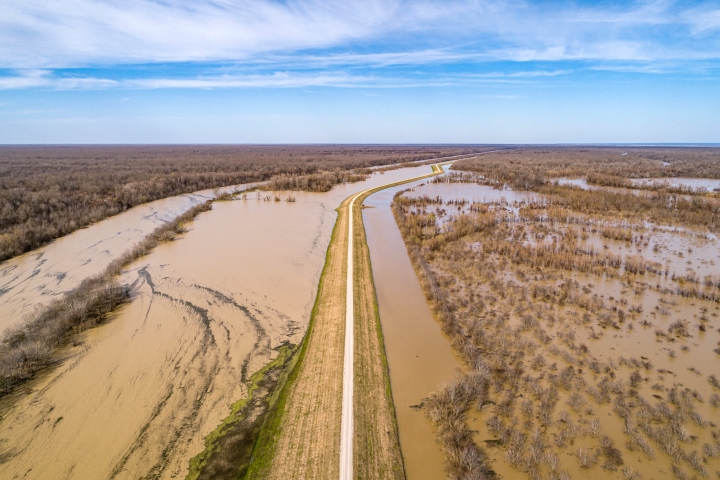The number of “extreme streamflow” events observed in river systems across the United States and Canada has risen significantly over the last century, according to a Dartmouth study published in Science Advances.
Although changes in precipitation and extreme streamflows have been observed in the past, there has been no consensus on whether droughts and floods have actually increased in frequency. According to the study, the results demonstrate that “increases in the frequency of both high- and low-flow extreme streamflow events are, in fact, widespread.”
The research team behind the study was composed of a mix of faculty, graduate and undergraduate researchers including Evan Dethier Guarini ’15, Guarini ’20; Carl Renshaw, a professor of earth sciences; Frank Magilligan, the Frank J. Reagan ’09 Chair of Policy Studies and a professor of geography; and Shannon Sartain ’21.
“Previous attempts to analyze regional pattern in streamflow were usually based on fixed geographical regions that were largely unsuccessful,” says Renshaw. “The novel clustering approach used in this research defines regions based on the hydrology—not geographical or political boundaries—to better reveal the significant shifts occurring for both high and low streamflows.”
The research team analyzed records dating back to 1910 to confirm the effect of recent changes in precipitation levels on river systems.
In regions where water runoff from snowmelt is a main contributor to river streamflow, the study found a rise in extreme events such as flooding.
In drought-prone regions in the western and southeastern U.S., the study found that the frequency of extreme low-flow events has also become more common, particularly during summer and fall.
“Floods and droughts are extremely expensive and often life-threatening events,” says Dethier, the lead author of the paper. “It’s really important that we have good estimates of how likely extreme events are to occur and whether that likelihood is changing.”
According to the study, floods and droughts have, on average, doubled in frequency relative to the period of 1950 to 1969 in the regions where streamflow changes were found to be statistically significant.
Major changes in the frequency of floods were found to be most common in the Canadian and northern U.S. regions where annual peak flows are consistently associated with spring snowmelt runoff.
“The shifts toward more extreme events are especially important given the age of our dams, bridges, and roads,” says Dethier.
While floods were found to be more localized, droughts were found to be “generally reflective of large-scale climatic forcing” and more likely to be widespread across a region.
David Hirsch can be reached at david.s.hirsch@dartmouth.edu

